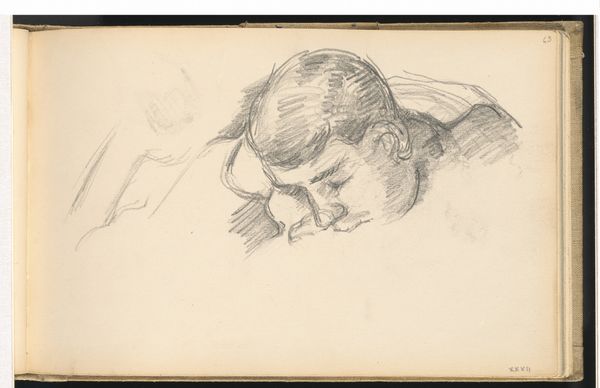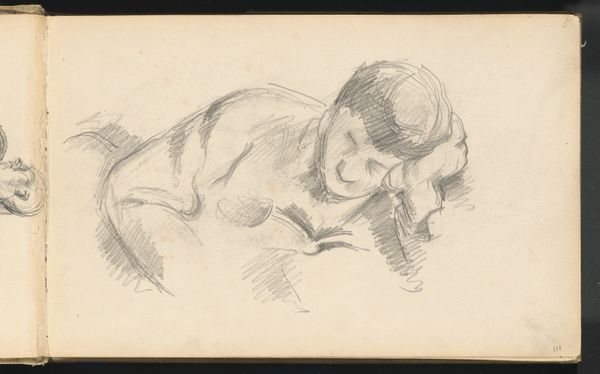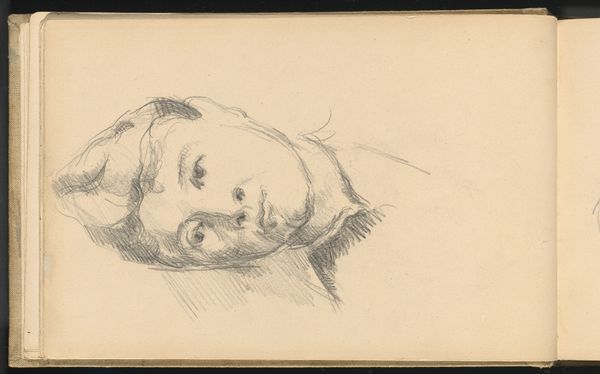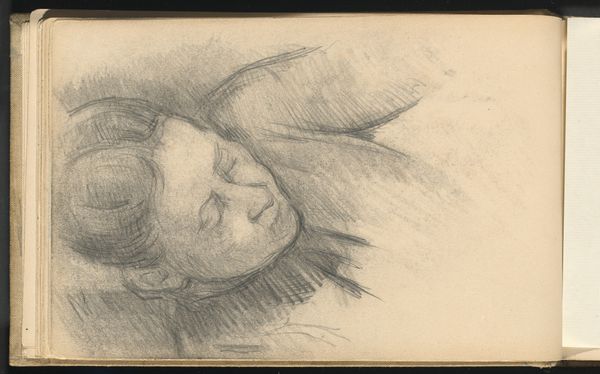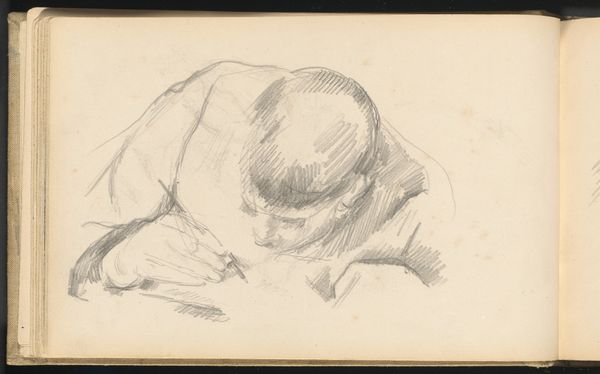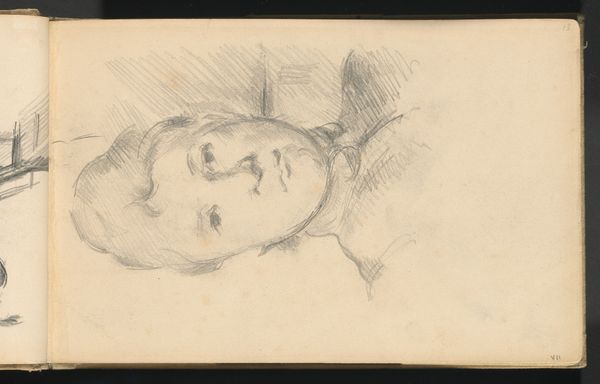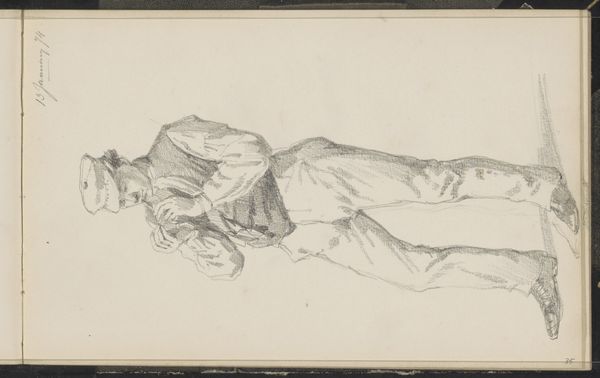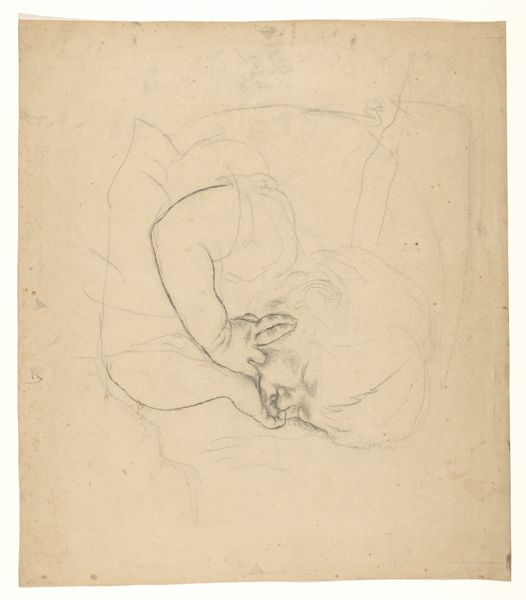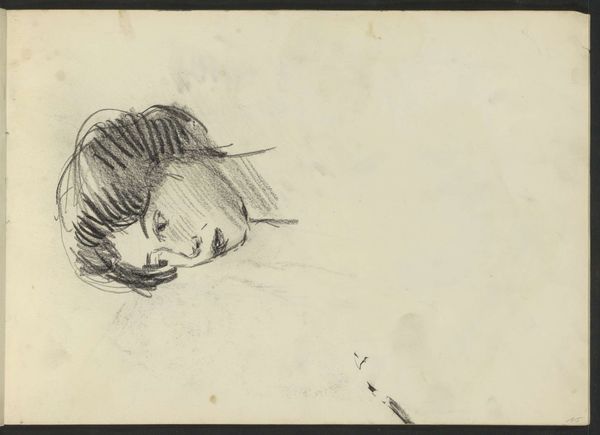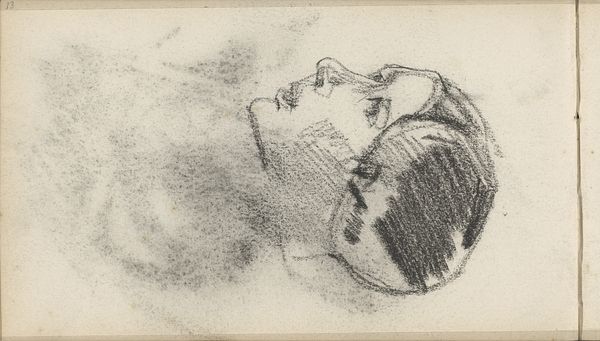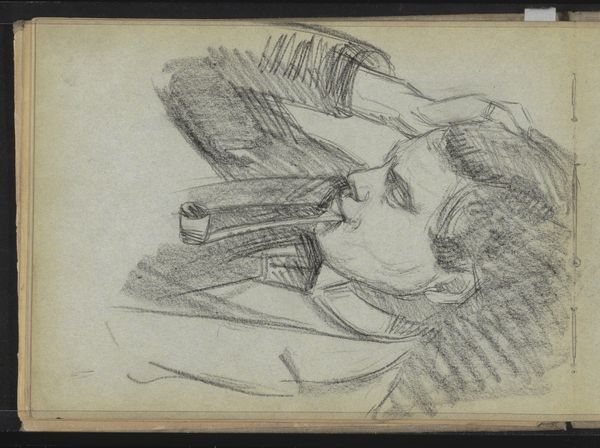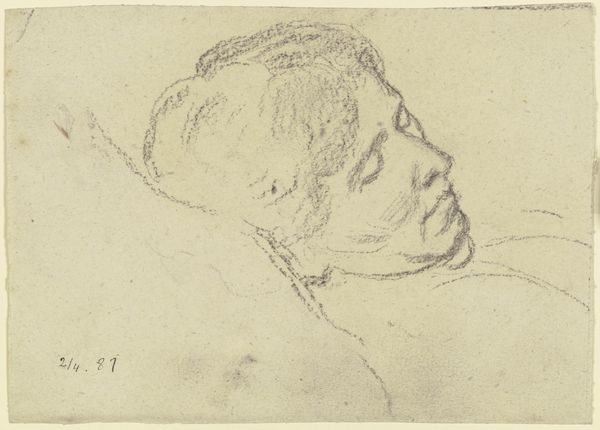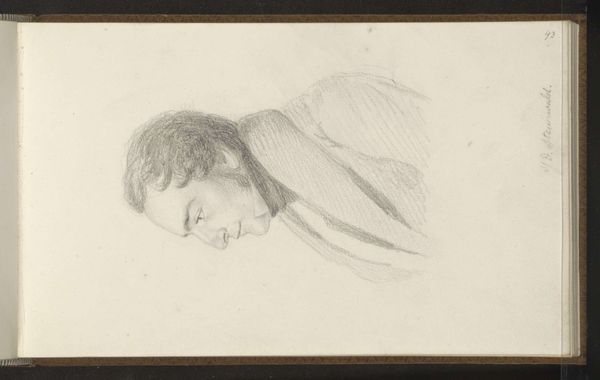
drawing, pencil
#
portrait
#
drawing
#
impressionism
#
pencil sketch
#
figuration
#
pencil
Dimensions: overall: 15.2 x 23.7 cm (6 x 9 5/16 in.)
Copyright: National Gallery of Art: CC0 1.0
Curator: Here we have Paul Cézanne's "The Artist's Son," a pencil drawing created around 1887. Editor: It strikes me as a study, a captured moment. The lines are incredibly delicate, giving a sense of intimacy, almost like peering into a private world. Curator: Precisely. Cézanne's portraits, even of family, often served as studies in form and volume. Consider the historical context: portraiture was shifting from commissioned works to more personal expressions, especially within the Impressionist movement. Editor: The materiality interests me here. Just pencil on paper, so fundamental. It really showcases the artist's process. How Cézanne builds form through layering, through the repetition of lines, rather than shading. You can almost feel the movement of his hand. Curator: Absolutely. And remember, Cézanne was striving to capture something beyond mere surface resemblance. He wanted to depict the underlying structure of things, to capture lasting form and volume as opposed to a fleeting impression, and yet…this medium doesn't immediately speak of those intentions, does it? Editor: I wouldn’t say that the drawing argues against that at all. There's a tension there, definitely. It’s quick, but it suggests a careful understanding of structure that surpasses pure visuality. Did this tension make it acceptable within Impressionist circles? I am asking in all honesty. Curator: A fascinating point. While aligned with Impressionism through its focus on modern life, it challenged its ephemeral qualities by grounding the impression in solid form. The Salon system certainly had trouble accommodating that goal, that is certain. Editor: Looking at the way the lines vary in pressure and direction, there's an incredible control, considering how spontaneous the sketch seems at first glance. What kind of labor was common at the time to create art materials themselves? Curator: With the rise of industrialization, materials became more accessible, shifting artists' relationships with production and creating larger creative markets that could generate revenue. The pencil itself became more than a mere tool, emerging instead as a symbol of creative freedom. Editor: Yes! And freedom could potentially result in capturing fleeting moments. Considering Cézanne's reputation for methodical construction in paint, seeing him embrace this fleeting quality is surprisingly wonderful. Curator: It offers an interesting perspective into the artistic practice, revealing the nuances within his creative vision. Editor: Exactly. It shows the artist testing possibilities with everyday tools, highlighting an integral part of the artistic process.
Comments
No comments
Be the first to comment and join the conversation on the ultimate creative platform.
